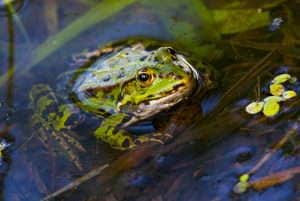
Frogs act as biosensors and help us in detecting polluted water
Frogs produce an unmistakable croaking sound that is associated with their mating behavior. There is a natural frog croaking sound that occurs when the environment, (water), is not affected by any toxins. However, scientists have discovered that this sound changes according to the level of pollution in the river. So clearly in their own way frogs measure water health.
How environmental factors impact the croaking of the frog
The condition of our lakes and rivers, especially close to population centers, is often impacted by a variety of factors. There is often industrial effluent released into the river Added to this is a large amount of human waste that finds it’s into the water ecosystem. A lot of the substances in the water are going to affect the hormonal balance of animals. Not only humans using the ecosystem but also of the aquatic life such as frogs. In fact the effect is particularly pronounced on the smaller animals.
The kind of substances released into the waterways is quite varied. Ranging from pesticides to medication and even human waste. While the substances may not be well known, their impact on our hormones is unmistakable and the same applies to their effect on frogs.
The Effect of Estrogen on the Mating Calls
Estrogen is a female hormones that is used in the contraceptive pills. A large amount which pass on to the natural environment through urine or simple disposal. These are effectively filtered out by the sewage treatment plants. So it is safe to assume that there is a substantial amount of estrogen in waters close to the major population centers. The addition of estrogen into the water is sufficient to change the male croaking sound.
While the change in the croaking sounds may not be easily discernible by the human ear, the frequency can be easily measured with the right instruments. After recording the normal “croaking frequency” in unpolluted water, scientists compare this to the croaking sound in the rivers over time. In this way they can estimate whether the river is heavily polluted.
Changes in Hormonal Development
Mating calls are not the only way of utilizing frogs in order to determine the health of the water they inhabit. It has also been determined that frogs in polluted water develop differently to those in healthy water. The skin of the frogs, for example, is very sensitive to chemicals in the water. The presence of toxins in the water will alter the color of the adult frogs living there.
Frogs Measure Water health like Natural Biosensors
By recording these changes, it is possible to rely on the way frogs measure water health. It is a way to quickly determine the overall level of pollution in the rivers and streams without testing the water in the laboratories. This can be particularly useful in the developing countries where communities do not have access to sophisticated testing equipment that can be used in determining the health of the water.
